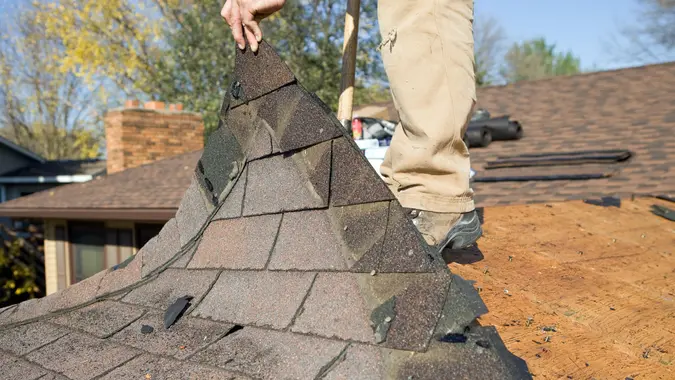What Is An Interest-Only Mortgage?

Commitment to Our Readers
GOBankingRates' editorial team is committed to bringing you unbiased reviews and information. We use data-driven methodologies to evaluate financial products and services - our reviews and ratings are not influenced by advertisers. You can read more about our editorial guidelines and our products and services review methodology.

20 Years
Helping You Live Richer

Reviewed
by Experts

Trusted by
Millions of Readers
Interest-only mortgage loans provide borrowers with lower mortgage payments during the initial few years of the loan. If you are trying to decide whether an interest-only mortgage would be right for you, or if you want to try to find the best mortgage rate for a conventional loan, it helps to do some research. You can start by looking at how a lender’s interest-only mortgage terms are different from its traditional mortgage terms.
Read: 3 Things You Must Do When Your Savings Reach $50,000
Interest-Only Mortgages: Quick Take
For a certain period of time at the beginning of the loan — usually three, five, seven or 10 years — you pay only interest on the loan balance. Interest-only mortgages can be an effective tool in the right circumstances, but this type of home loan was part of the reason for the Great Recession of 2007 to 2009. Now, regulators keep a very close eye on them as these loans typically require a much larger down payment than traditional mortgages.
Here are some key takeaways on how interest-only mortgages work:
- Some interest-only loans come with a fixed interest rate for the first few years, but that varies among financial institutions.
- After your interest-only payment period ends, you pay interest and principal for the remaining life of the mortgage.
- In year eight, the interest rate can start rising by up to 1% per year, but you’ll still be paying only the principal with this type of mortgage.
- Once you reach the 10-year mark, you’ll begin paying principal and interest. Because you paid only interest for the first 10 years, the principal will be amortized over the last 20 years of the loan.
- For interest-only mortgages backed by some financial institutions, you must make a down payment of at least 30%, which is significantly higher than as little as 3% on a traditional 30-year mortgage, but you typically won’t have to pay for private mortgage insurance on an interest-only mortgage.
Here’s an example: if you take out an interest-only, 7/1 adjustable-rate mortgage loan, you’ll pay interest only for the first 10 years of the loan and the interest rate will be fixed for the first seven years.
Interest-Only Mortgages: Pros and Cons
An interest-only mortgage can sound appealing to a potential homebuyer because it is a mortgage loan that requires that you pay only interest — no principal — for the first several years. After that, you pay the principal and interest.
Pros and Advantages
Like any financial tool, an interest-only mortgage has pros and cons. Review these four benefits to decide if you’re a good candidate for this type of home loan:
- Interest-only mortgage loans can free up cash so you can use that money for other things during the first 10 years. Some people invest the money they save, hoping to earn a higher rate of return.
- You might take out an interest-only home loan if you earn a relatively low base salary but get a large, annual bonus. When you get your bonus you can make an optional principal payment.
- If you have a substantial income but foresee a big expense in the near future — like college tuition — using an interest-only loan to refinance your house might help you manage that cost.
- You’ll get a tax deduction for the entire amount of your monthly payment for the first 10 years if the loan is on your primary residence because the interest you pay on your primary mortgage is tax deductible.
Cons and Disadvantages
An interest-only mortgage could be ideal for some, but this kind of home loan does come with some drawbacks. Review these three cons to decide if any is a deal breaker for you:
- During the first 10 years of the mortgage loan term, you only build equity in the house through the increase in its value, if any. When you borrow $250,000 with an interest-only mortgage, 10 years later, you’ll still owe $250,000.
- If you’re paying mortgage insurance, you’ll continue to pay it until you have enough equity in your home, which won’t be until you’ve been paying both principal and interest.
- Your monthly payment will go up substantially after the interest-only period. The principal portion you’ll pay after the 10-year, interest-only period will be 50% more than the principal portion on a traditional 30-year payment because you’ll be paying off the principal in 20 years instead of 30.
Can You Still Get an Interest-Only Mortgage?
If you are trying to find a way to switch from a repayment mortgage to an interest-only mortgage, you will have to assess your cash flow and how it will affect how you pay off the loan. Meeting your lender’s mortgage criteria may mean you’ll have to ensure you have a repayment plan in place or can settle the mortgage loan at the end of the term in one lump sum.
Final Take To GO
You might think an interest-only loan will enable you to qualify for a more expensive house than a traditional mortgage, but this isn’t always the case. Most interest-only mortgage lenders qualify you based on your ability to handle the highest monthly payment you’ll have to eventually make on the loan. Interest-only loan rates can differ from the rates charged for a traditional mortgage, but if your credit score is high you might be able to find comparable rates, so shop around for the best mortgage lender.
Karen Doyle contributed to the reporting for this article.
 Written by
Written by  Edited by
Edited by 

























